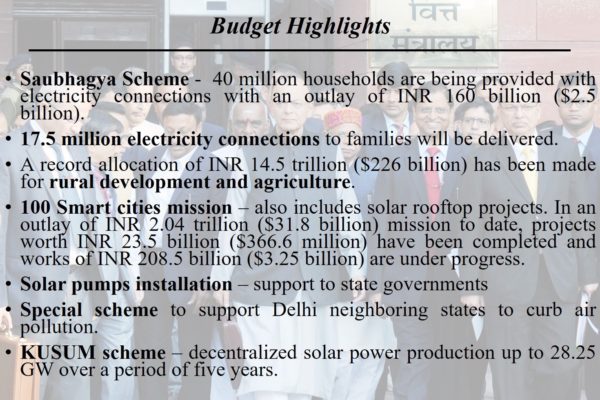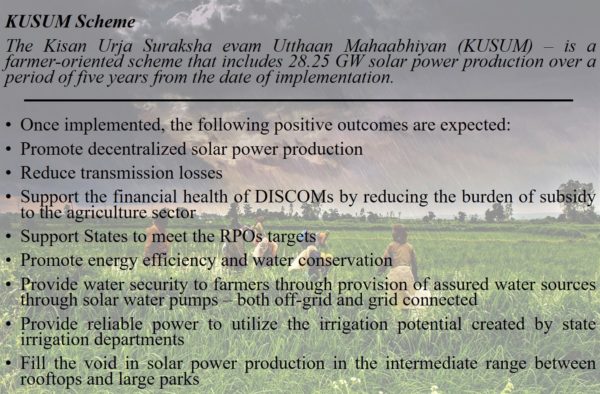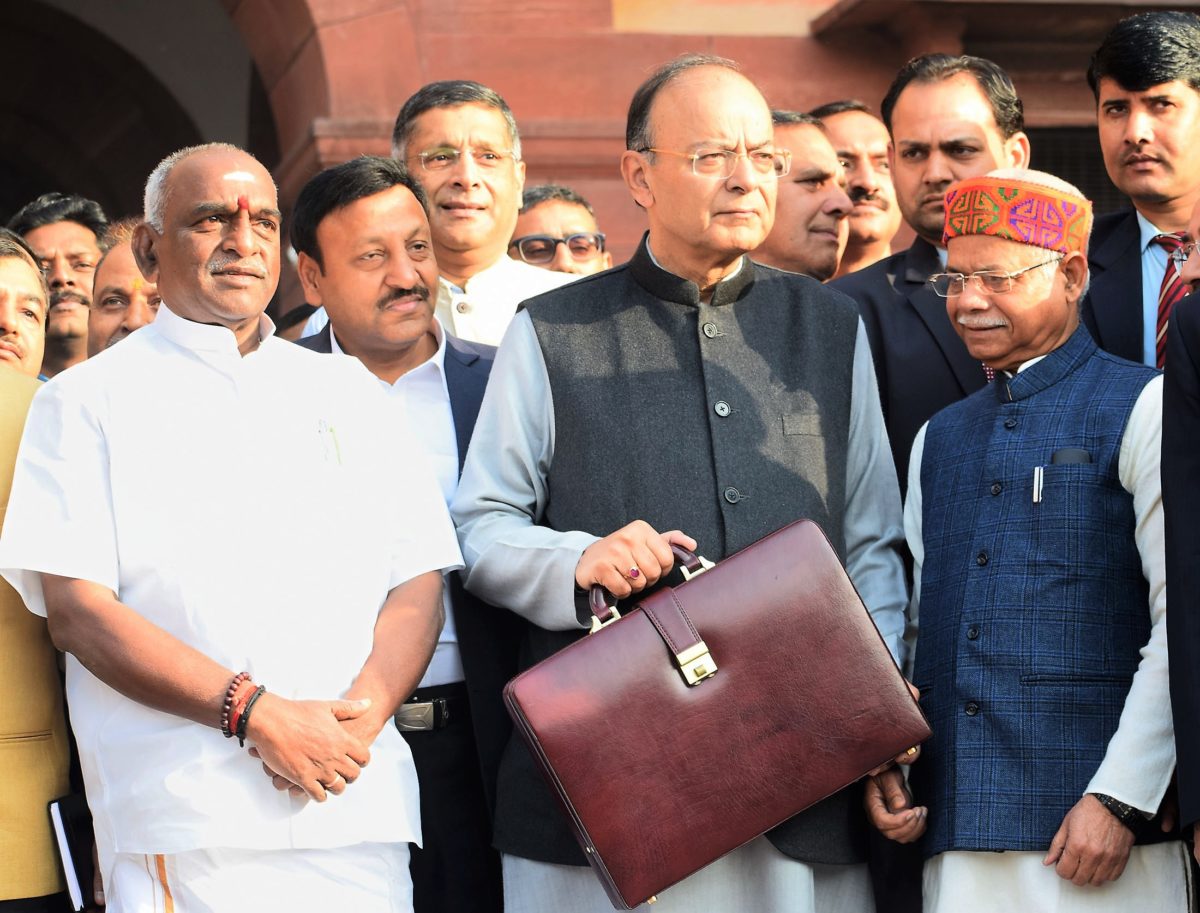The Modi government presented its last fiscal Union Budget 2018-19 on February 1, 2018. Next year, India will hold a Lok Sabha election, where the present ruling party, BJP – Bhartiya Janta Party – will once again vie with the opposition parties for power. Hence, this budget is considered particularly crucial for the BJP.
According to political commentators, the budget appeared to be little more than a political manifesto, and seemed to ignore a variety of pressing concerns, not least the solar sector.
Gagan Vermani, Founder & CEO, MYSUN, said: “So eventually the ‘election year’ has taken the shine away from the ‘Sun’.”
The Ministry of Power (MoP) has commented on the Budget on February 02, particularly on the fact that the focus of the government is ‘24×7 Clean and Affordable Power for All.’ RK Singh, Minister of Power and New & Renewable Energy said: “We will provide electricity connection to each and every household in the country by April 2019. This budget has given a thrust in this direction.”
The solar industry was on tenterhooks awaiting this budget. Since the growing uncertainties over trade and duties have troubled many solar power developers, they had expected some further clarification on the direction in which the government is leaning. Additionally, solar manufacturers, who are fighting to protect the domestic sector against imported modules coming from China, Taiwan, and Malaysia, had expected some incentives or subsidies from the government.
With all the anticipation from stakeholders, the budget, presented by the Finance Minister of India, Arun Jaitley, failed to live up to their expectations.

Image: pv magazine
Commenting on the budget, Gyanesh Chaudhary, MD, and CEO, Vikram Solar said: “Budget 2018-19 is not very encouraging for the renewable and solar energy sector. The government has missed out on a major opportunity to take the lead towards combating climate change.”
Surbhi Singhvi, Manager – Consulting, Bridge to India, told pv magazine that renewable energy had not received much attention in the budget, which seemed primarily focused on populist measures.
Solar installations
The Ministry of New and Renewable Energy (MNRE) has already unveiled its solar plans up to 2020, and has proposed to bid 30 GW of solar projects in 2018-19. India performed excellently in 2017, installing 8.5 GW of utility-scale solar. However, Bridge to India predicts that number will go down to 5-6 GW in 2018.
Chaudhary agrees with this synopsis, and stated that the budget has a very limited allocation to MNRE with a target to achieve 11 GW of installations in the next financial year.
Chaudhary also mentioned that allocation to SECI has seen a reduction. This, undoubtedly, will tie SECI’s hands and could affect the MNRE’s tendering roadmap since SECI is one of the major allocation agencies for the government.
Furthermore, Chaudhary highlighted that the large chunk of the coal that was earlier transferred to the National Clean Energy Fund now goes towards the GST compensation fund. “The budget does not talk about any alternative mechanism that would fund clean energy installations in India.”
Trade duties still frosty
At present, several import duties are hovering threateningly over the Indian solar sector. Namely, safeguard duty, import duty (also called as Basic Customs Duty), a proposed anti-dumping duty, and – in addition – the goods and service tax (GST).
Vermani said: “It was much awaited that the Finance Minister would clear the government’s view on customs duty on solar cells and modules, but that has not materialized.”
On the other hand, the India Energy Storage Alliance (IESA) is extensively addressing the importance of the domestic market for storage. Thus, to grow domestically, IESA warned that industry should not make the same mistakes that happened in solar sector, which relinquished almost 90% of its market to foreign players.
Rahul Walawalkar, Executive Director, IESA, said that IESA’s priority right now is on increasing domestic demand where the upfront cost is definitely a concern, as the number of products in the local manufacturing is not available. He said: “Detailed studies are in progress to see the implications pertaining to the storage sector, although the budget does not mention any additional customs duties.
“However, increased customs duty on electronic items is a matter of concern and will create hurdles in market adaptation,” quoted Walawalkar.
Farmers may benefit
The budgetary allocation of the Agriculture and Farmers Welfare Ministry has been increased to INR 580.8 billion ($9.06 billion) for this fiscal year from INR 516 billion ($8.05 billion) for the 2017-18 years. It is in line with the Prime Minister’s pledge to double farmers’ income by 2022. The budget also says that the central government will work with the state governments to facilitate farmers for installing solar water pumps to irrigate their fields.
The government also proposed a KUSUM scheme. Commenting on this, Singh said: “The scheme would provide additional income to farmers by giving them the option to sell additional power to the grid, through solar power projects set up on their barren lands.”

Image: pv magazine
However, Vermani quoted: “Overall, with its overriding focus on farmers, the budget is expected to give a boost to rural consumption, which in turn will help India achieve its much higher GDP forecasts for next year.” Vermani also showed his disappointment at the solar energy sector being ignored in this year’s budget.
Despite such a farmer-focused budget, Singhvi feels that budgetary allocations for rural electrification under the Saubhagya scheme, and solar pumps for agricultural use, seem too small and are less than expected.
Whereas, K N Subramaniam, Member of General Council, Indian Solar Manufacturers’ Association (ISMA) thinks that the budget has created a path-breaking change for farmers, with the provided allocations along with KUSUM. Subramaniam told pv magazine that Saubhagya will be truly transformative, and together with the benefits of economic growth will reach the bottom of the pyramid, i.e., the major population.
According to the recently released Economic Survey, climate change is affecting India, especially farmers. It states that rainfall extremities have increased in the past 10 years and climate change can potentially reduce a farmer’s income by 20-25%.
Not much for manufacturing
India’s solar manufacturing sector is poorly affected by the imported modules, where a situation in which India imports almost 90% of modules is a threat to the nation’s energy security.
Realizing the threat to domestic manufacturing, the Indian Solar Manufacturers Association (ISMA) has filed a petition to Ministry of Finance. Accepting the case, Director General of Safeguards, Customs, and Central Excise has proposed a 70% safeguard duty for 200 days.
Despite the ongoing issue, the finance minister has clearly skipped this sector, said Chaudhary. “The current provisions in the budget does not mention any support for the manufacturing industry, which has been highly discouraging for the sector.”
However, some support has arrived for the glass industry. For solar tempered glass with or without anti-reflective coating used for module manufacturing, the GST will be reduced from 5% to zero.
“We hope that government will take additional steps to increase installations of solar power plants by providing direct and indirect support,” he quoted.
Consulting firm Bridge to India also mentioned that MNRE’s promises to boost domestic manufacturing and rooftop installations through new schemes has not received the required financial support.
IESA appears optimistic
The Indian government has initiated a scheme called Faster Adoption and Manufacturing of (Hybrid &) Electric Vehicles (FAME) under the National Electric Mobility Mission (NEMM), which is a framework that defines the roadmap for electric vehicles (EV) in the country.
Moreover, Jaitley has stressed on building a robust infrastructure for roadways, railways and smart cities. “We are sure the infrastructure plan will include electric transportation and optimal electrification of the railways,” said Walawalkar.
India plans an entire EV fleet by 2030. Currently, the GST on EVs is on the high side at around 12%. Faisal Ahmed, Founder, and CEO, BIS (Business, Intelligence & Strategic) Research had expected that the government might consider lowering the import duties on certain parts for EV manufacturing like motors and lithium-ion batteries to give the proper support and boost the adoption of electric vehicles in India. However, no such announcement was forthcoming.
Walawalkar mentioned that the government had increased the allocation money under the FAME scheme, but its non-ambitious goals of 100% EVs by 2030 is minimal. “We are looking forward to the National Energy Storage mission, which should lay out more specifics about EVs. This is a good start, but we expect lot more clarity & initiatives from government for 100% electrification targets,” quoted Walawalkar.
This content is protected by copyright and may not be reused. If you want to cooperate with us and would like to reuse some of our content, please contact: editors@pv-magazine.com.








By submitting this form you agree to pv magazine using your data for the purposes of publishing your comment.
Your personal data will only be disclosed or otherwise transmitted to third parties for the purposes of spam filtering or if this is necessary for technical maintenance of the website. Any other transfer to third parties will not take place unless this is justified on the basis of applicable data protection regulations or if pv magazine is legally obliged to do so.
You may revoke this consent at any time with effect for the future, in which case your personal data will be deleted immediately. Otherwise, your data will be deleted if pv magazine has processed your request or the purpose of data storage is fulfilled.
Further information on data privacy can be found in our Data Protection Policy.